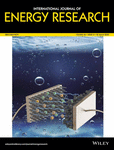Operating performance of multi-modular water-phase change material tanks for emergency cooling in an underground shelter
Funding information: Chengdu Science and Technology Project, Grant/Award Number: 2019-YF05-01326-SN; International Energy Agency, Grant/Award Number: Annex 37; National Natural Science Foundation of China, Grant/Award Number: 51678488
Summary
Latent heat thermal energy storage can not only alleviate the mismatch between supply and demand but also improve the performance and dependability of the energy system. Unfortunately, previous research achieves a specific engineering load shifting using a single water-phase change material (PCM) tank, the volume of which is tailored to the specific cooling or heating load. This paper proposes the concept of multi-modular water-PCM tanks (MMWPT), which offer flexibility and are simple to be mass-produced, as thermal storage in an underground shelter's emergency mode. The thermal inertia of the geothermal energy is used to remain the PCM at solid state at first and to naturally cool the tank once they are melted. The mathematical model is created in MATLAB and validated by experiment with an NMBE of less than ±10% and RMSE of less than 30%. In addition, the MMWPT's thermal performance in various matrixes was investigated in an underground shelter where the peak load occurs suddenly and with low frequency. The result reveals that the ∆Twater in the scenario with matrix form of N (number of tanks in series) × 5 (number of tanks in parallel) is almost four times as that with matrix form of N × 1. By separating the water into five parallel water tanks, the corresponding EDD is 1.27-1.28 times larger. Changing the N from 1 to 2 and 3 could increase the EDD by 3.0%-12.5% and 5.9%-25%, respectively. Three acceptable MMWPT matrixes were presented using the effective discharging duration (EDD) and temperature drop as assessment criteria. Additionally, PCM with a maximum phase change temperature ( ) of 19.41°C and a connection matrix of 3 × 4 is recommended when using a single charging cycle or active cooling approach. Otherwise, a
) of 19.41°C and a connection matrix of 3 × 4 is recommended when using a single charging cycle or active cooling approach. Otherwise, a  of 22.41°C with a connection matrix of 3 × 5 is advised. This research is planned to give references for using the MMWPT in underground shelters to shift loads.
of 22.41°C with a connection matrix of 3 × 5 is advised. This research is planned to give references for using the MMWPT in underground shelters to shift loads.
CONFLICT OF INTEREST
The authors declare that they have no known competing financial interests or personal relationships that could have appeared to influence the work reported in this paper.
Open Research
DATA AVAILABILITY STATEMENT
No available data.




